2017 Los Alamos Dynamics Summer School
Team Projects
Project Description
Mentors: Yongchao Yang and David Mascareñas
Students: Benjamin Chesebrough, Sudeep Dasari, Andre Green
Structures and systems usually have complex geometries, material properties, and boundary conditions, and exhibit spatially local, temporally transient, dynamics behaviors. Measuring their dynamic responses at multi-dimensional, high spatial and temporal resolution, are essential to accurately characterize the structure’s dynamics and validate the high-fidelity mathematical model (e.g., a finite element model). However, it is a significant challenge to obtain high-resolution vibration measurements using traditional techniques. On the other hand, digital video cameras are relatively low-cost, agile, and provide non-contact, high spatial resolution, simultaneous, measurements where every pixel effectively becomes a measurement point on the structure.
Recently, light field cameras are emerging as a new imaging tool, capable of capturing 3-dimensional, high-resolution information about the object in a single shot. Different from traditional digital cameras that measure only light intensity, light field imaging measures not only the light intensity, but also the direction of the light ray. Thus, they allow for reconstruction of the 3-dimensional, full-field object model, and perspective refocus on the object even after the images are taken.
The proposed research aims to develop a novel light field imaging method for capturing structural dynamics responses at 3-dimensional, high resolution, and full-field. The dynamics model will be physically connected to computer vision and machine learning models to effectively and efficiently extract such structural dynamics information from the light field measurements.
In this project, under mentors’ guidance, the students will develop a new structural imaging method for capturing 3-dimensional, full-field structural response. They will establish a 3D, high-resolution, full-field dynamic model from the light field measurements, using the latest computer vision and machine learning techniques. They will design and build different types of lab-scale structural models, and conduct dynamics testing experiments to validate the method. Specifically, they will apply their developed new light-field imaging method to study the 3-dimensional, full-field, dynamics properties of the structure under environmental variations at a resolution and detail that was not previously possible. At the end of the project, the students will have solid understanding and skills of the fundamentals of structural dynamic modeling and testing, system identification, signal/video processing, and machine learning. Furthermore, they will grow interests and knowledge about the state-of-the-art sensing and imaging technology from a practical engineering perspective. Finally, they will develop a suite of MATLAB codes of the developed algorithm based on open-source light field imaging measurement and algorithms, computer vision, and machine learning codes, and be trained to write scientific reports for publications in top-tier engineering journals.
Project Team
Ben Chesebrough – I am a graduate student at New Mexico Tech, studying mechanical engineering with a specialization in mechatronic systems and robotics. My research involves designing, modeling, and building a robotic arm device light enough to be operated from an octocopter, and capable of articulating a variety of tools. I am an outdoorsman, and enjoy all of the beautiful things that the southwest has to offer.
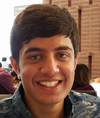 Sudeep Dasari - I am a rising junior studying Electrical Engineering and Computer Science at the University of California, Berkeley. I am a member of Eta Kappu Nu. My current research interests involve computer vision and graphics as well as machine learning/AI work. I am very interested in going to graduate school in the future, and am excited for this opportunity to explore cyber-physical systems.
Sudeep Dasari - I am a rising junior studying Electrical Engineering and Computer Science at the University of California, Berkeley. I am a member of Eta Kappu Nu. My current research interests involve computer vision and graphics as well as machine learning/AI work. I am very interested in going to graduate school in the future, and am excited for this opportunity to explore cyber-physical systems.
When I’m not machine learning on big data (or whatever buzz word infused task my professors have me working on), you can find me learning card tricks, playing the piano, exploring trendy coffee shops, and playing video games.
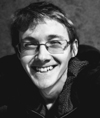 Andre' Green – I'm a sophomore at the University of New Mexico studying Computer Science. I've worked at Los Alamos and Sandia laboratories previously on algorithm development and application (primarily for various imaging devices) and projects relating to structural health monitoring. I am most interested in both applications for and the theory of machine learning. In my spare time I draw, play music, write video games, and sometimes get my code to compile.
Andre' Green – I'm a sophomore at the University of New Mexico studying Computer Science. I've worked at Los Alamos and Sandia laboratories previously on algorithm development and application (primarily for various imaging devices) and projects relating to structural health monitoring. I am most interested in both applications for and the theory of machine learning. In my spare time I draw, play music, write video games, and sometimes get my code to compile.
Project Description
Mentors: Chuck Farrar and Alex Scheinker
Students: Travis Andrews, William Robert Locke, Brian West
The process of implementing a damage detection strategy for aerospace, civil and mechanical engineering infrastructure is referred to as structural health monitoring (SHM). The SHM process compliments traditional nondestructive evaluation by extending these concepts to online, in situ system monitoring on a more global scale. The SHM problem can be described in terms of a statistical pattern recognition paradigm. In this paradigm, the SHM process can be broken down into four parts: (1) Operational Evaluation, (2) Data Acquisition and Cleansing, (3) Feature Selection and Extraction, and (4) Statistical Model Development for Feature Discrimination. For long term SHM, the output of this process is periodically updated information regarding the ability of the structure to perform its intended function in light of the inevitable aging and degradation resulting from operational environments. After more extreme events, SHM is used for rapid condition screening and aims to provide, in near real time, reliable information regarding the integrity of the structure.
This project will begin with the hypothesis that damage, regardless of the type, increases the complexity of system. The focus of this study will then be to define appropriate measures of complexity for SHM and to develop a framework whereby the effectiveness of a proposed damage-sensitive feature can be evaluated by its ability to quantify changes in complexity. The concept of complexity has been study extensively in many different contexts and a quick search on Google will reveal numerous measures that have been proposed for quantifying complexity. A portion of this study will be to assess these different measures and find the ones that are most applicable to detect a specific type of damage. It is anticipated that there will not be a single measure of complexity that is appropriate for all types of damage. The measure that might be appropriate to identify a crack in a vibrating plate may not be the same one that would be used when identifying corrosion in the same plate.
This project will investigate these measures of complexity analytically with numerical simulations and experimentally with various test structures subjected to simulated damage. An initial portion of the project will be to develop an analytical/experimental plan that can be accomplished under the time constraints of the program. Time permitting, the group can investigate the consistency of the complexity measures found to be best suited for a particular type of damage with the measures of complexity that are used by the continuum damage mechanics community.
Project Team
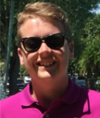 Travis Andrews - I am a senior studying Mechanical Engineering at the University of Florida (UF). Additionally, I am a member of various intramural sports teams, and serve as a Teacher Assistant for Mechanics of Materials and Mechanical Design. My research currently involves fatigue damage in aircraft engine ball bearings subject to rolling contact fatigue. Furthermore, film thickness and pressure distributions in ball bearing contacts under elastohydrodynamic lubrication are areas of interest I want to pursue in route to attaining my PhD at UF in the future. Schooling aside, I enjoy playing sports (particularly tennis), listening to music, and watching movies.
Travis Andrews - I am a senior studying Mechanical Engineering at the University of Florida (UF). Additionally, I am a member of various intramural sports teams, and serve as a Teacher Assistant for Mechanics of Materials and Mechanical Design. My research currently involves fatigue damage in aircraft engine ball bearings subject to rolling contact fatigue. Furthermore, film thickness and pressure distributions in ball bearing contacts under elastohydrodynamic lubrication are areas of interest I want to pursue in route to attaining my PhD at UF in the future. Schooling aside, I enjoy playing sports (particularly tennis), listening to music, and watching movies.
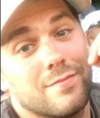 Robert Locke - I am a doctoral student studying Structural Engineering at Clemson University in Clemson, SC. I also received my Bachelor’s and Master’s degrees at Clemson, and was the first person in my family to receive a college degree. My research involves analyzing dynamic signals obtained from accelerometers attached to vehicles in order to detect damage in bridge structures. I am also working with a research team to help develop a smart community that is self-sustaining and resilient to weather and other disaster related failures. When not conducting research, I like to spend my time working out or playing sports. If I cannot get outside, I spend my time streaming House of Cards, Scandal, or Game of Thrones. My purpose for attending the Summer school is to further develop my skills in dynamic analysis and FEM so that I can better conduct future research.
Robert Locke - I am a doctoral student studying Structural Engineering at Clemson University in Clemson, SC. I also received my Bachelor’s and Master’s degrees at Clemson, and was the first person in my family to receive a college degree. My research involves analyzing dynamic signals obtained from accelerometers attached to vehicles in order to detect damage in bridge structures. I am also working with a research team to help develop a smart community that is self-sustaining and resilient to weather and other disaster related failures. When not conducting research, I like to spend my time working out or playing sports. If I cannot get outside, I spend my time streaming House of Cards, Scandal, or Game of Thrones. My purpose for attending the Summer school is to further develop my skills in dynamic analysis and FEM so that I can better conduct future research.
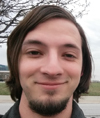 Brian West – I am a senior studying Mechanical Engineering at Missouri University of Science and Technology. I am an active member of the American Society of Mechanical Engineers and am responsible for organizing interactive activities and contests for the student chapter. Currently, my research involves non-destructive evaluation of metallic additively manufactured parts using modal analysis. My future plan is to attend graduate school upon completion of my bachelor’s degree. In my free time, I enjoy playing piano, cooking, and playing racquetball.
Brian West – I am a senior studying Mechanical Engineering at Missouri University of Science and Technology. I am an active member of the American Society of Mechanical Engineers and am responsible for organizing interactive activities and contests for the student chapter. Currently, my research involves non-destructive evaluation of metallic additively manufactured parts using modal analysis. My future plan is to attend graduate school upon completion of my bachelor’s degree. In my free time, I enjoy playing piano, cooking, and playing racquetball.
Project Description
Mentors: Troy Harden, Alessandro Cattaneo
Students: JoAnn Ballor, Oscar McClain, Miranda Mellor
A primary concern for the Department of Energy mission is ensuring that critical infrastructure maintains its structural integrity over the course of many years. If the structural integrity of holding tanks, pipelines, pressure vessels or other key infrastructure is compromised the result could be the unintended release of dangerous waste or chemicals into the environment. The impact of such a release includes damage to the environment, health hazards for humans, and degradation in the public trust of the DOE. Unfortunately, to date the tools available to structural inspectors to perform structural inspections has been very limited. In many cases inspectors are limited to using their eyes, ears, a tape measure and a hammer to perform an inspection. Notes are taken using a pad of paper and a pencil. In some cases a tablet computer might be used to take notes along with a digital camera for documentation. Unfortunately these techniques are clumsy and result in very few data points being measured and recorded. In some cases thermal imagers or ultrasonic non-destructive testing techniques might be used, but these techniques are expensive, and bulky to deploy. In this work we will focus on developing novel structural inspection tools for environmental management applications based on emerging augmented reality technology. Augmented reality technology allows for holograms to be placed in the real world. It represents an exciting new way for inspectors to both collect, interact with, visualize, and analyze inspection data. For example, modern augmented reality devices typically come equipped with a depth imager. This imager can be used to make high-resolution 3D models of critical infrastructure on-the-fly during an inspection. This data could be used to precisely track how concrete beams or steel panels are corroding. A high-resolution 3D measurement of a corroded area could be made. If measurements are made year after year, inspectors will be able to instantly overlay the measurements from the prior year to visually compare how the structure has changed. A plot can be made on-the-fly showing how the volume of corrosion has changed. Furthermore, RGB images can be taken all over the structure and used to compare with prior year inspections. Eventually all this data can be fed to machine learning algorithms and finite element models to provide additional insight into structural integrity. Another major advantage of augmented reality devices is that they are typically hands-free, thus providing the inspector the use of their hands to perform tap tests or to navigate difficult terrain or to even better operate while rappelling off the side of a structure. Augmented reality itself could be interfaced with other sensors to not only record data, but to also overlay data from ultrasonic or thermal imagers onto the actual structure as desired in order to get a more complete picture of structural integrity.
Project Team
 JoAnn Ballor - I am a first-year graduate student in the materials science and engineering department at Michigan State University. I am working towards my Ph.D. in materials engineering. I graduated from Michigan Technological University in December of 2016 with a B.S. in Mechanical Engineering, and minors in math and psychology. My research involves analysis of how the phase composition and crystal structure of titanium alloys affects mechanical properties. My hobbies include reading, crochet, hiking, rowing, and Olympic lifting.
JoAnn Ballor - I am a first-year graduate student in the materials science and engineering department at Michigan State University. I am working towards my Ph.D. in materials engineering. I graduated from Michigan Technological University in December of 2016 with a B.S. in Mechanical Engineering, and minors in math and psychology. My research involves analysis of how the phase composition and crystal structure of titanium alloys affects mechanical properties. My hobbies include reading, crochet, hiking, rowing, and Olympic lifting.
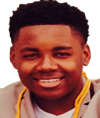 Oscar L. McClain – I am currently a sophomore double majoring in Chemistry and Chemical Engineering at Southern University and A&M College, where I also am a member of the Honors Student Association, Beta Kappa Chi Scientific Society, and the National Institute of Science Club. Last year, I was an intern at Los Alamos National Laboratory, where I did research to determine platinum loadings for electrodes through the use of a Micrometer Film Applicator. Outside of classes and research, I enjoy playing basketball, spending time with family and friends, acting, and watching television.
Oscar L. McClain – I am currently a sophomore double majoring in Chemistry and Chemical Engineering at Southern University and A&M College, where I also am a member of the Honors Student Association, Beta Kappa Chi Scientific Society, and the National Institute of Science Club. Last year, I was an intern at Los Alamos National Laboratory, where I did research to determine platinum loadings for electrodes through the use of a Micrometer Film Applicator. Outside of classes and research, I enjoy playing basketball, spending time with family and friends, acting, and watching television.
 Miranda Mellor – I am a junior studying Structural Engineering with a focus in Structural Health Monitoring at the University of California, San Diego. I’ve lived my entirely life in Washington state, and relocated to California for school. I have been a member of Sigma Kappa Sorority for three years. I recently began working as one of the structural engineers on a project team with the Society of Women Engineers at UCSD. Currently, I am performing research in a structural and material engineering lab at UCSD. My research is focused in magnetorheological elastomers, and testing their materials properties and various applications.
Miranda Mellor – I am a junior studying Structural Engineering with a focus in Structural Health Monitoring at the University of California, San Diego. I’ve lived my entirely life in Washington state, and relocated to California for school. I have been a member of Sigma Kappa Sorority for three years. I recently began working as one of the structural engineers on a project team with the Society of Women Engineers at UCSD. Currently, I am performing research in a structural and material engineering lab at UCSD. My research is focused in magnetorheological elastomers, and testing their materials properties and various applications.
Project Description
Mentors: Stuart Taylor and John Heit
Students: Vivian Cai, Michael Maestas, Alan Williams
In mechanical testing for system qualification, test engineers often face the challenge of representing a multi-axis vibration environment using a single-axis shaker table with only one degree of freedom for control. On large, complicated systems, the target environments are often defined as power spectral densities (PSDs) at multiple locations. These PSDs are almost invariably defined such that they are not physically realizable in any boundary condition. If one location responds with exactly its target PSD, another location will respond with a PSD that is different from its respective target.
Test engineers have developed various strategies for compromise control schemes that aim to reduce the extent to which the response PSD of any given location fails to match that of its target PSD. However, most practical approaches that have been implemented are not optimal, do not adjust for nonstationary behavior in the system, and make no attempt to reduce the overall error by improving the controllability of the system under test.
In this project, students will learn the relevant linear system, control, and signal processing theory underpinning mechanical testing for random vibration environments. Students will propose control strategies to minimize the error between specified target PSDs and measured response PSDs for a given test article. Students will program and implement their proposed strategies to work in concert with standard random vibration controllers. Students will implement their control strategies in a rapid prototyping and development cycle, troubleshooting and refining the strategies to select the best one based on objective benchmark testing. They will report their findings in a conference paper to be presented at the 36th IMAC Conference and Exposition on Structural Dynamics.
Project Team
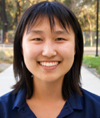 Vivian Cai – I am a junior studying Structural Engineering at the University of California San Diego, where I am a welder for Steel Bridge project team and the Vice President-Development of the Society of Civil and Structural Engineers (SCSE). I hope to attend graduate school at UCSD focusing on civil or aerospace structures. On my free time, I enjoy swimming, exploring new areas and new food, outdoor sports, and hanging with friends.
Vivian Cai – I am a junior studying Structural Engineering at the University of California San Diego, where I am a welder for Steel Bridge project team and the Vice President-Development of the Society of Civil and Structural Engineers (SCSE). I hope to attend graduate school at UCSD focusing on civil or aerospace structures. On my free time, I enjoy swimming, exploring new areas and new food, outdoor sports, and hanging with friends.
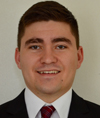 Michael Maestas – Currently I am senior studying Mechanical Engineering at New Mexico State University and I plan to graduate in May 2017. I plan on attending Colorado School of Mines in the fall to get my MS in Mechanical Engineering as well. I have worked as an undergraduate student for LANL with the group Applied Engineering Technology 1 (AET-1) where I have worked on thermal testing of high explosives and some additive manufacturing projects. My time outside of work and classes is mostly spent mountain biking but I also spend a lot of time shooting archery.
Michael Maestas – Currently I am senior studying Mechanical Engineering at New Mexico State University and I plan to graduate in May 2017. I plan on attending Colorado School of Mines in the fall to get my MS in Mechanical Engineering as well. I have worked as an undergraduate student for LANL with the group Applied Engineering Technology 1 (AET-1) where I have worked on thermal testing of high explosives and some additive manufacturing projects. My time outside of work and classes is mostly spent mountain biking but I also spend a lot of time shooting archery.
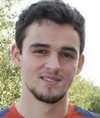 Alan Williams –I recently graduate with a Bachelor of Science in Mechanical Engineering from the University of Florida, and am pursuing a graduate education in the fall of 2017. At Florida my research was centered on mechatronics and control, and for my senior thesis I worked on the designing and controlling of a CMG, or control moment gyroscope. I enjoy the outdoors and sports in general but have a special passion for tennis and soccer.
Alan Williams –I recently graduate with a Bachelor of Science in Mechanical Engineering from the University of Florida, and am pursuing a graduate education in the fall of 2017. At Florida my research was centered on mechatronics and control, and for my senior thesis I worked on the designing and controlling of a CMG, or control moment gyroscope. I enjoy the outdoors and sports in general but have a special passion for tennis and soccer.
Project Description
Mentors: Garrison Stevens and Emily Casleton
Students: David Alexander, Polina Alexeenko, Bridget Daughton
Modeling and simulation plays a major role in the design and safety assessment of complex dynamic systems. Quantification of Margins and Uncertainties (QMU) seeks to evaluate uncertainties in model predictions to ensure a safe margin between an engineering system’s behavior and a prescribed failure regime. Within QMU, uncertainty quantification requires a comparison of predictions from a simulation model to experimental physical measurements of selected quantities of interest (QoI). As systems become more complex, a single QoI may span across several operational settings (i.e. temperatures or frequencies) as well as over large spatial and temporal domains. Increasingly, experimental techniques are available to collect full-field measurements across these domains. However, benefits of detailed experimental data cannot be fully realized until calibration and validation metrics are expanded to capture the same full-field, multi-domain behaviors.
The goal of this project is to identify reduced order quantities of interest that combine measurements and simplify predictions over large domains to a metric feasible for implementation in QMU. These metrics should reduce the dimensionality of a measured or simulated physical quantity while maintaining relevant correlations across the domain. Metrics should also be informative for model calibration, effectively reducing uncertainty in model parameters.
In this project, you will conduct a thorough analytical study to compare various statistical decomposition techniques for reducing the dimensionality of full-field, multi-domain QoI. You will collect full-field time histories of structural vibrations at varying excitation frequencies as well as develop a finite element model of the system for predicting the vibration response. You will apply the statistical decomposition to measured and simulated quantities and compare the model predictions and the true system to calibrate uncertain parameters. A comparison of the reduced order QoI will be completed and validated with known material properties of an aluminum plate. Finally, the best performing reduced order QoI will be extended for uncertainty quantification of a composite plate model.
Project Team
 David Alexander IV- I am a graduate student studying Mechanical Engineering at Tuskegee University, where I am also a math instructor for the Upward Bound, the federally funded TRiO program for students who are interested in post-secondary education after graduation from high school. I am a member of Pi Tau Sigma mechanical engineering honor society, student athlete mentor, and problem solving tutor for math and physics. Currently, my research involves the development of a resonance enhanced micro-actuator nozzle for supersonic mixing applications. For leisure, I enjoy creating unforgettable experiences, public speaking, and having fun with family and friends.
David Alexander IV- I am a graduate student studying Mechanical Engineering at Tuskegee University, where I am also a math instructor for the Upward Bound, the federally funded TRiO program for students who are interested in post-secondary education after graduation from high school. I am a member of Pi Tau Sigma mechanical engineering honor society, student athlete mentor, and problem solving tutor for math and physics. Currently, my research involves the development of a resonance enhanced micro-actuator nozzle for supersonic mixing applications. For leisure, I enjoy creating unforgettable experiences, public speaking, and having fun with family and friends.
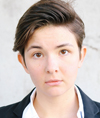 Polina Alexeenko – I am a fourth-year student in mathematics at UC Berkeley. My research is in the application of methods in control theory to macroeconomic policy design. I enjoy hiking, cooking, and learning new languages. In the fall, I will begin working toward a doctoral degree in Electrical Engineering in the area of control and optimization.
Polina Alexeenko – I am a fourth-year student in mathematics at UC Berkeley. My research is in the application of methods in control theory to macroeconomic policy design. I enjoy hiking, cooking, and learning new languages. In the fall, I will begin working toward a doctoral degree in Electrical Engineering in the area of control and optimization.
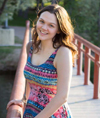 Bridget Daughton - I am currently a junior at New Mexico Institute of Mining and Technology (NMT). I am majoring in chemical engineering with a minor in biology. My extracurriculars include participation in NMT’s Student Government Association as both a secretary (1 year) and a senator (1 semester). I have also been involved in biomedical research for the past year developing a biosensor that uses fluorescence
Bridget Daughton - I am currently a junior at New Mexico Institute of Mining and Technology (NMT). I am majoring in chemical engineering with a minor in biology. My extracurriculars include participation in NMT’s Student Government Association as both a secretary (1 year) and a senator (1 semester). I have also been involved in biomedical research for the past year developing a biosensor that uses fluorescence
Project Description
Mentors: Eric B. Flynn, PhD & Dustin Y. Harvey, PhD
Students: Peter Fickenwirth, Charles Liang, Tyrell Rupp
In monitoring and surveillance applications, local measurements are often not possible due to instrumentation costs and/or access restrictions. In these situations, one must rely on remote measurements for making assessments about the system and detecting anomalous behavior. However, in remote monitoring situations, rather than capturing the system behavior directly, one can only capture the behavior after it’s been “filtered” through the environment that stands between the system and the sensor(s). In addition, one must also necessarily capture the emissions of all other systems present in that environment, confounding the measurement.
Typically, one develops remote detection algorithms by training on remote measurements of the activity of interest. However, in many cases, the activity of interest is so rare that training measurements in the remote environment do not exist, and one only has local laboratory measurements to train-on. On the other hand, one may have both local and remote measurements of other, more common activities.
This study aims to develop a new approach for building remote anomaly detection algorithms by utilizing both local and remote measurements of normal activity in order to learn how the propagation environment affects the measurement.
The test case for this study will be remote condition monitoring of rotating machinery. Downtime of critical machinery can be expensive and pose a risk to safety. For example, failure in the cooling machinery in a power plant can have devastating consequences. In facilities where dozens of machines may be operating simultaneously, thorough instrumentation of every machine may be logistically and economically infeasible. A system that could monitor multiple machines remotely from a central measurement instrumentation location would be incredibly valuable for aircraft monitoring, automobile monitoring, smart homes, smart power grids, assembly lines, process control, manufacturing, and power generation.
Other broad areas that will benefit directly from this research include structural health monitoring, disease detection, emissions treaty verification, nonproliferation, seismology, and cyber-physical security.
Project Team
Peter Fickenwirth – I am currently a junior studying Mechanical Engineering and Mathematics at the University of Massachusetts Lowell. On campus I work in the Structural Dynamics and Acoustics Systems laboratory researching structural health monitoring of wind turbine blades through acoustic analysis with the goal of creating system computer-controlled system that can do this autonomously. Apart from my academics I am an avid musician, playing sousaphone in the marching band and hockey pep band, and also playing as the principal tubist in the University Wind Ensemble. I love spending time outdoors in any form, but especially hiking, camping, rock climbing, skiing, and sailing.
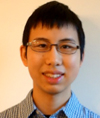 Charles Liang - I am a rising senior studying Applied Physics at Columbia University, where I also serve as project lead of the educational outreach initiative Phones4Education and as outreach coordinator for the Society of Physics Students. I have conducted research in biophysics and computational quantum physics, and in the future, I hope to pursue a Ph.D. in Materials Science and Engineering on research that could have potential clean energy applications. In my free time, I enjoy swimming, playing the violin, practicing Chinese calligraphy, and practicing French with friends.
Charles Liang - I am a rising senior studying Applied Physics at Columbia University, where I also serve as project lead of the educational outreach initiative Phones4Education and as outreach coordinator for the Society of Physics Students. I have conducted research in biophysics and computational quantum physics, and in the future, I hope to pursue a Ph.D. in Materials Science and Engineering on research that could have potential clean energy applications. In my free time, I enjoy swimming, playing the violin, practicing Chinese calligraphy, and practicing French with friends.
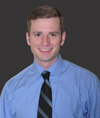 Tyrel Rupp – I am a mechanical engineering Ph.D student at the University of Utah, where I recently started researching wireless energy transfer for powering cranial implants. I also studied mechanical engineering as an undergraduate at Utah State University. While there I concurrently worked as an Engineering Assistant at their Space Dynamics Laboratory. Projects there included leading a 15 student, multidisciplinary senior design team funded NASA’s X-HAB initiative as well as redesigning a second generation plant growth chamber for the International Space Station. Outside of academic pursuits I am an avid mountain biker and outdoorsman.
Tyrel Rupp – I am a mechanical engineering Ph.D student at the University of Utah, where I recently started researching wireless energy transfer for powering cranial implants. I also studied mechanical engineering as an undergraduate at Utah State University. While there I concurrently worked as an Engineering Assistant at their Space Dynamics Laboratory. Projects there included leading a 15 student, multidisciplinary senior design team funded NASA’s X-HAB initiative as well as redesigning a second generation plant growth chamber for the International Space Station. Outside of academic pursuits I am an avid mountain biker and outdoorsman.
Project Description
Mentors: Scott Ouellette and Michelle Lockhart
PI: Alexandria Marchi
Students: Carl Fauver, Elon Gordon, David Petrushenko
Many industries have begun exploring the numerous opportunities offered by replacing traditional manufacturing techniques with additive manufacturing (AM). Aerospace, automotive and medical companies have embraced the advantages of AM including mass customization of functional, low-volume, highly complex, multi-material geometries. While traditionally manufactured parts involve forging and casting of bulk materials to develop the final part, additively manufactured parts are produced by continuously layering lines of the bulk material to build up the object, e.g., the fused deposition modeling process (FDM). The FDM process is subject to a high degree of variability, producing parts with several defects and abnormal mechanical properties. Advocates of AM promote its unique ability to fabricate one-off parts; however, with part-to-part variation arises the need to monitor the structural health of each unique part. Embedding optical fiber Bragg grating (FBG) sensors into AM structures allows for measurements of internal strain and temperatures over the operational lifetime of a part. FBGs are preferable over strain gauges and thermocouples, in part, due to their resiliency to electromagnetic interference; which is of concern when implementing AM parts in defense applications. Traditionally, strain gauges are adhered to the surfaces of the parts of interest because the maximum strain in bulk, non-laminar, structures is at the surface. Embedding FBGs is necessary because of the laminar behavior of AM parts coupled with their potential use in extreme environments where the surfaces of parts may be compromised over time. Keys to fully capturing the mechanical properties of a part include full adhesion of the FBG to the part and comprehensive understanding of the thermal and mechanical sensitivities of the FBG.
In this project, you will model given part geometries to determine proper locations to place FBGs. You will calibrate FBG sensitivities against thermal fluctuations and known strains. You will develop a technique to properly embed FBGs into AM parts and experimentally test the mechanical integrity of parts with and without FBGs, validating your models.
You will learn the AM process using a Lulzbot Taz to 3D print your geometries. Micron Optics instrumentation will be provided for use in interrogating the FBGs. You will use ABAQUS to model the various geometries and loading conditions, which will be compared to your experimental testing setup. LabVIEW software and/or Python code scripts will be used for data acquisition.
Project Team
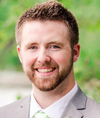 Carl Fauver – I am currently a sophomore studying Applied Mathematics and Mechanical Engineering at the University of Utah. I am a member of honors societies Pi Mu Epsilon and Sigma Alpha Pi. I graduated valedictorian of my high school in the Salt Lake area where I continue to be involved with STEM outreach and local sports. I am the director of Mathnasium Cottonwood Heights, teaching children mathematics up through calculus. My current research, in the mechanical engineering department, involves complex structuring of ceramics through freeze casting. These special structures often have interesting directional strength properties. After graduating from the U. I hope to attend graduate school and continue my education. When I’m not in school, I often spend time playing sports, backpacking mountains, and relaxing in a hammock.
Carl Fauver – I am currently a sophomore studying Applied Mathematics and Mechanical Engineering at the University of Utah. I am a member of honors societies Pi Mu Epsilon and Sigma Alpha Pi. I graduated valedictorian of my high school in the Salt Lake area where I continue to be involved with STEM outreach and local sports. I am the director of Mathnasium Cottonwood Heights, teaching children mathematics up through calculus. My current research, in the mechanical engineering department, involves complex structuring of ceramics through freeze casting. These special structures often have interesting directional strength properties. After graduating from the U. I hope to attend graduate school and continue my education. When I’m not in school, I often spend time playing sports, backpacking mountains, and relaxing in a hammock.
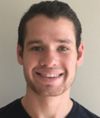 – I am a senior studying mechanical engineering and physics at Columbia University SEAS. I specialize in Aeronautics/Aerospace and I am interested in entrepreneurship. I am a member of the Delta Sigma Phi Fraternity, team lead for Columbia’s design team in the NASA Aero Design Challenge, and a member of the Brazilian Jujitsu Club. My past research has been in the design, optimization, and manufacturing of a novel solar air heater. I have also been a finalist in an innovation competition and served on student senate. My hobbies include cooking, martial arts, running and climbing.
– I am a senior studying mechanical engineering and physics at Columbia University SEAS. I specialize in Aeronautics/Aerospace and I am interested in entrepreneurship. I am a member of the Delta Sigma Phi Fraternity, team lead for Columbia’s design team in the NASA Aero Design Challenge, and a member of the Brazilian Jujitsu Club. My past research has been in the design, optimization, and manufacturing of a novel solar air heater. I have also been a finalist in an innovation competition and served on student senate. My hobbies include cooking, martial arts, running and climbing.
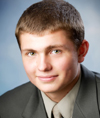 David Petrushenko – I am a junior at SUNY Polytechnic Institute pursuing a Bachelor of Science degree in Mechanical Engineering. Working as a Design Engineer at a machine shop during my early studies initiated my interest in studying machining process dynamics. I am currently part of Dr. Khasawneh’s Research Group studying vibrations and their applications in machining dynamics. I plan to attend graduate school to continue my studies in Mechanical Engineering focusing on vibrations and manufacturing. Outside of academics, I enjoy hiking, traveling, tinkering with machines, and working on RepRap projects.
David Petrushenko – I am a junior at SUNY Polytechnic Institute pursuing a Bachelor of Science degree in Mechanical Engineering. Working as a Design Engineer at a machine shop during my early studies initiated my interest in studying machining process dynamics. I am currently part of Dr. Khasawneh’s Research Group studying vibrations and their applications in machining dynamics. I plan to attend graduate school to continue my studies in Mechanical Engineering focusing on vibrations and manufacturing. Outside of academics, I enjoy hiking, traveling, tinkering with machines, and working on RepRap projects.
Selected Guest Lectures
- Tom Paez - Random Vibration Analysis: What it is and what it's good for?
- Phil Cornwell - Making Effective Presentations
- Garrison Stevens - Multi-Physics Modeling
- Jim Wren - Thinking Telescopes
- Nikos Dervilis - Wind Turbines
- David S. Moore - Explosives
- Amy Regan - Satellites
- Nick Lieven - Aerospace Structures
- Curtt Ammerman - B61 Lifetime Extension Program
- Yongchao Yang - Full Field Imaging of Structural Dynamics
- Alex Marchi - PU Measurements
- Reinhard Friedel - LANL Satellites



